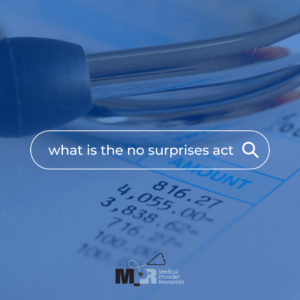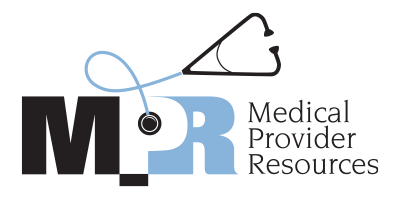About The No Surprises Act
The Consolidated Appropriations Act of 2021, established a new requirement to protect consumers from surprise medical bills. These requirements are referred to as “The No Surprises Act”. This applies to items and services provided to consumers enrolled in group health plans, group or individual health insurance coverage, and Federal Employee Health Benefits plans. The No Surprises Act amended the Public Health Service Act (PHSA) to change how providers, facilities, and insurance providers must handle billing processes.
Here are some of the changes that came from this legislation:
 No Balance Billing for Out-of-Network Patients – this refers to charging the patient the difference between the provider’s charges and the amount allowed by the patient insurance.
No Balance Billing for Out-of-Network Patients – this refers to charging the patient the difference between the provider’s charges and the amount allowed by the patient insurance.- Coverage for Emergency Services Without Prior Authorization – Insurance companies must cover emergency services without prior authorization for both in-network and out-of-network facilities.
- Good Faith Estimates – Self-pay and uninsured patients are entitled to good faith estimates (GFEs) under the No Surprises Act. GFEs should include all items of services reasonably expected to be delivered with the item or service.
- Dispute Resolution – If a state does not have a surprise billing law or more detailed support is needed, providers can utilize the Independent Dispute Resolution (IDR) process. IDR helps provider, payors and facilities determine how much a payor must pay an out-of-network provider or emergency facility for services that fall under balance billing restrictions.
- Notice and Consent to Balance Bill – Providers can still charge balance bills if they collect patient consent to do so. Notices must include an estimate of charges and be furnished between 3 to 72 hours prior to the appointment, depending on when it is scheduled.
Requirements:
To improve provider directories, providers and facilities must frequently submit information to a plan or insurer. The time frame requesting these updates is every 90 days to keep their databases up to date. The provider will need to update the insurance companies when network agreements start or end, significant changes occur, the plan or issuer requests it or when the provider, facility deems it appropriate. If the directory is inaccurate and a patient pays more as a result, the provider or facility is in charge of reimbursing the patient.
Have questions about insurance enrollment services? Our insurance enrollment experts are here as your resource. Contact us and Medical Provider Resources is happy to help!



